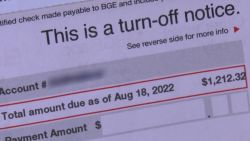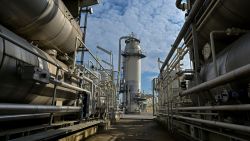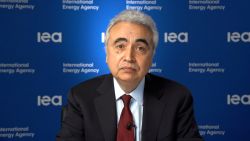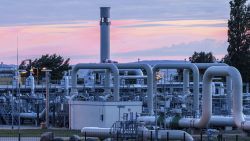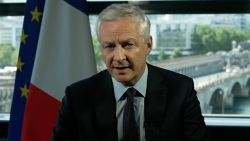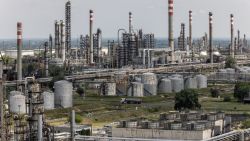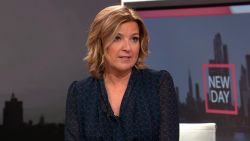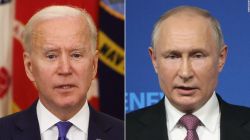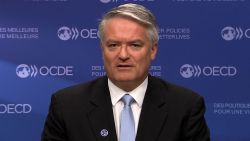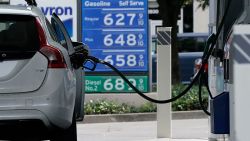The surge in oil prices this year has angered drivers, tainted Americans’ views on the economy and confounded both the White House and Federal Reserve. Unfortunately, JPMorgan Chase says the oil spike is just getting started.
In a new report on Monday, JPMorgan (JPM) warned clients that Brent crude oil will hit $125 a barrel next year and $150 in 2023, in large part because OPEC doesn’t have nearly as much firepower to respond to high prices as many assume.
“They don’t have the barrels. It’s a mirage,” Christyan Malek, JPMorgan’s head of oil and gas research and the lead author of the new report, told CNN in a phone interview.
$150 oil is more than double today’s Brent price of about $73.50. If that forecast proves accurate, it would likely translate to national gas prices topping $5 a gallon and surely exacerbate inflationary pressures hitting the US economy and squeezing American families.
The central problem, Malek said, is that while OPEC nations have plenty of oil in the ground, they don’t have the capital and logistics to deliver it quickly.
OPEC’s real spare capacity, a closely watched metric that measures the amount of barrels that can swiftly be added to the market, stands at just 2 million barrels per day next year, JPMorgan estimates. That is less than half of what many on Wall Street assume.
OPEC’s spare capacity equates to just 4% of total capacity, down from an average of 14% between 1995 and 2020 and well below the 10% comfort level, JPMorgan said. When this buffer gets unusually low, oil prices can spike and investors apply a premium to prices.
“Look back at history. When we’re in a scenario where the market goes, ‘We don’t have spare capacity,’ that’s where you see overshoots,” Malek said.
The fear in those situations is that the oil market is just one shock (a war, natural disaster or another supply disruption) away from being unable to meet demand.
Omicron sent oil nosediving
Importantly, JPMorgan is not calling for oil to trade at $125 a barrel for all of 2022. Instead, the bank is predicting crude will average $88 next year and “overshoot” to $125 at some point. Likewise, JPMorgan sees Brent averaging $82 in 2023 but overshooting to $150.
Still, the timing of the call is somewhat curious.
Oil prices collapsed on Friday on fears that the Omicron variant will deal a blow to surging energy demand by eating into the amount of people driving and flying. Crude bounced back Monday, though it remains well below recent highs.
But Malek explained he has been working on this analysis for months and the forecast isn’t altered by Omicron. That’s because if the new coronavirus variant does dent demand, OPEC would likely offset it by cutting supply.
“They will look for excuses to take a breather,” Malek said of OPEC.
OPEC and its allies are meeting on Thursday and must decide whether to push forward with a plan to add 400,000 barrels per day in supply despite the Omicron fears and a United States-led intervention to unleash strategic reserves. Prior to the emergence of Omicron, the White House urged OPEC+ to stick with its plans to gradually increase supply.
$150 oil would translate to $5 gas
Veteran energy analyst Tom Kloza, president of the Oil Price Information Service, said $150 oil would roughly translate to $5-a-gallon gasoline nationally.
And that doesn’t include the impact from more states joining California and Oregon in imposing carbon costs aimed at slashing emissions.
Prices at the pump have already been a sore spot for consumers. The national average currently stands at $3.39 a gallon, up from $2.13 a year ago, according to AAA.
JPMorgan said world oil producers, including OPEC, have failed to put up the amount of capital required to ramp up production enough to meet demand. The Wall Street bank estimates there is a $750 billion gap in terms of global oil capital spending, requiring oil to rise to $80 to incentivize further investment.
“We’ve taken oil availability for granted,” Malek said.
Underinvesting to please Wall Street
But why have countries and companies underinvested? Malek points to several factors.
First, OPEC nations scaled back spending when Covid erupted and required massive investment in public health and economic measures.
“Covid-19 wiped out investment. These countries had to protect themselves fiscally. They didn’t allocate as much into spare capacity,” Malek said.
That’s why Malek wrote that OPEC will “struggle” to grow its output next year, even if it pauses production hikes in the beginning of 2022.
Secondly, Wall Street investors have demanded oil companies stop spending all their cash flows on expensive drilling projects. Oil drillers are being strongly encouraged to live within their means and return extra cash to shareholders through dividends and buybacks.
“To do that, you have to invest less. You can put money in the ground or give it back to shareholders. If you do the latter, you are under investing,” Malek said, adding that he calls this the “black premium” built into energy prices.
And then there’s the energy transition. Under pressure from shareholders, governments and society at large, oil companies are spending money on reducing emissions and building low-carbon businesses. That’s especially the case in Europe, where BP, Shell and other major companies have promised to slash emissions and invest heavily in electric charging and renewable energy.
“We didn’t use to have a transition cost. Now we do,” Malek said.
Calls for $200 oil were wrong back in 2008
Of course, JPMorgan’s call for $150 oil is a bit of an outlier.
The Energy Information Administration expects Brent crude to slide to an annual average of $72 a barrel next year as production grows from OPEC+, US shale and other non-OPEC countries.
Kloza, the veteran energy analyst, is skepticalof JPMorgan’s forecast.
“It reminds me of when we hit $145 a barrel in July 2008 and some banks predicted $200 by year’s end,” Kloza said in an email to CNN, “only to see the post Lehman Brothers financial debacle push prices instead to the $30s.”




